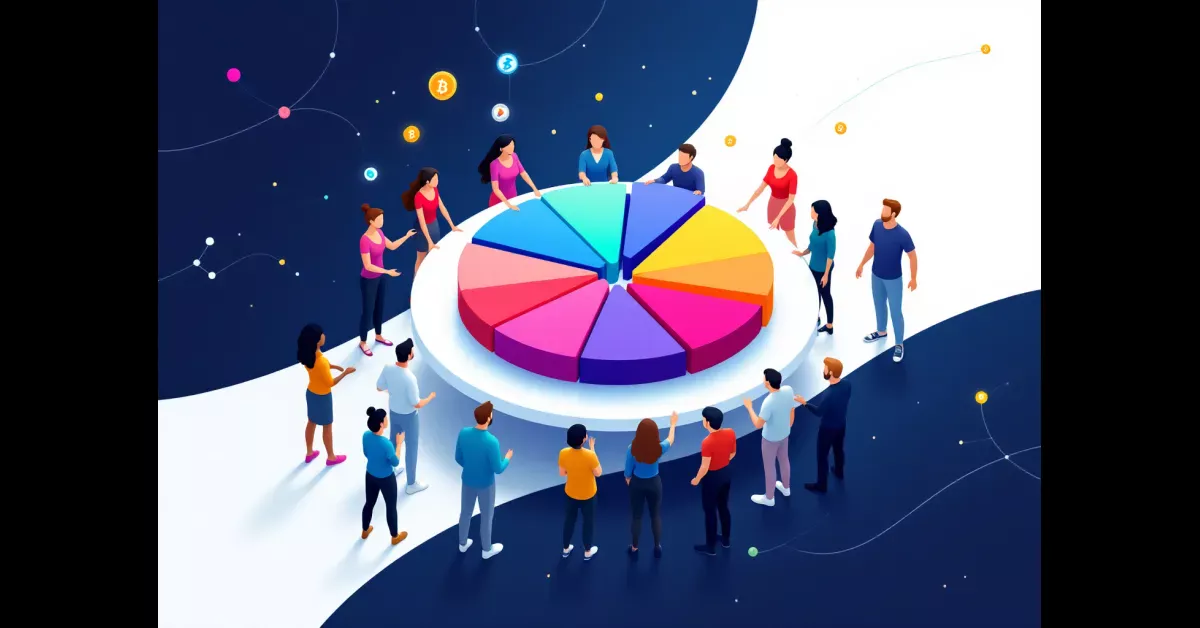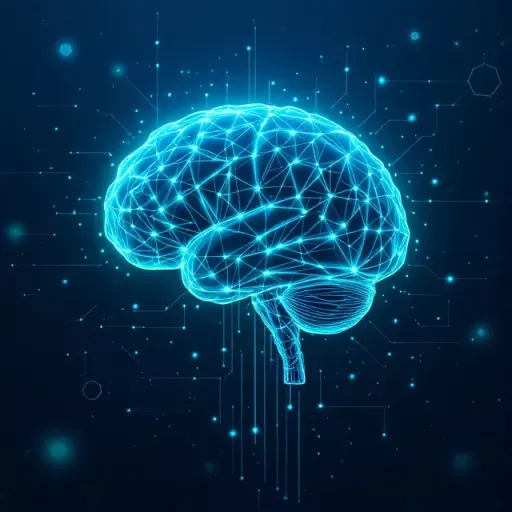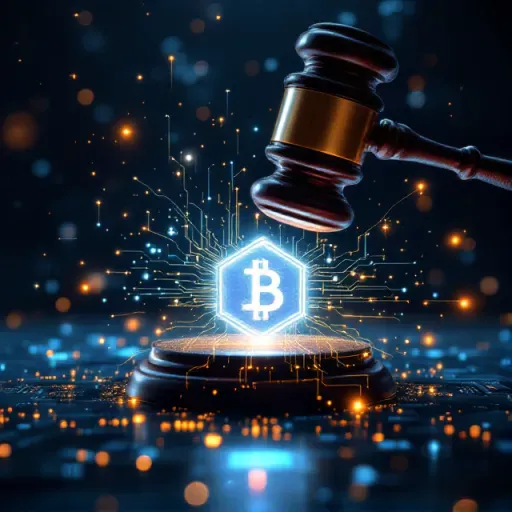Imagine your typical workplace: a CEO at the top, managers in the middle, and employees carrying out directives from above. This hierarchical structure has dominated organisations for centuries. But what if there was a different way to organise people—one without traditional bosses, where everyone has a say in decision-making?

Enter the Decentralised Autonomous Organisation, or DAO. These internet-native entities are gaining significant traction in the web3 space, offering a radical alternative to conventional organisational structures. Instead of centralised leadership, DAOs distribute power among their members, using blockchain technology and smart contracts to operate transparently and autonomously.
This article breaks down what DAOs are, how they work, their advantages and disadvantages, and why they matter—all in straightforward terms that don’t require a computer science degree to understand.
What Exactly is a DAO? (Simple Explanation)
At its core, a DAO is essentially an online co-op or an internet-native entity with no central governance. Think of it as a special type of group where everyone who’s part of it can vote and make decisions together, rather than following orders from the top.
Decentralisation: Power to the People
The “Decentralised” in DAO means power and decision-making are distributed to the edges of the system rather than concentrated at the top. It’s similar to a community garden where everyone has a plot and a say in how the garden operates, instead of one owner making all the decisions.
Autonomy: Self-Governing by Code
The “Autonomous” part refers to how a DAO is self-governed via smart contracts—essentially rules encoded as computer programs on a blockchain that automatically execute once pre-defined criteria are met.
Think of it like a vending machine: you insert money and select an item (input), and the machine automatically dispenses your choice (output). In a DAO, you might use tokens to vote on a proposal (input), and if enough votes accumulate, the smart contract automatically implements the decision (output).
Blockchain technology provides an immutable and secure way to record and manage data, ensuring that all transactions and decisions are transparent and tamper-proof.
The Role of Tokens
Most DAOs use governance tokens or NFTs as a decentralised signalling tool that give members voting rights. Generally, the more governance tokens a person owns, the more votes they have—though some DAOs are experimenting with different voting structures.
These tokens often derive their value from the protocol they govern and may be linked to the value of the DAO’s shared treasury of assets.
No Central Authority
Perhaps most importantly, DAOs are designed to operate without centralised leadership and are not influenced by a central government. This represents a fundamental shift from traditional organisational models where power flows from the top down.
How Do DAOs Actually Work? (The Nuts and Bolts)

Proposals and Voting
In most DAOs, any member can submit ideas and proposals for improvements or protocol changes. These might include suggestions for new features, changes to existing rules, or proposals for how to spend the DAO’s treasury.
Once a proposal is submitted, token holders get to vote on these proposals, with voting power typically proportional to the number of tokens they hold. Collective participation is strongly encouraged via the distribution of voting power, creating an incentive for members to actively engage in governance.
Smart Contract Execution
If a proposal receives enough votes to pass (the threshold is usually defined in the DAO’s rules), the smart contract will automatically execute the decision. This automation removes the need for trusted intermediaries to implement community decisions.
Transparency by Design
One of the most powerful aspects of DAOs is their transparency. Every transaction is visible to all members as it lives on a public blockchain. Additionally, the rules of the organisation are established by smart contracts which are also visible to everyone. This transparency cultivates trust and collaboration among members who might never meet in person.
Treasury Management
Most DAOs maintain a shared treasury of assets—often cryptocurrency—that can be used to fund projects, reward contributors, or invest in other ventures. The governance process determines how these assets are used, with members voting on spending proposals.
Open Communication
Discussions about proposals and voting typically take place publicly on platforms like Discord or governance forums. This open communication ensures that all members have access to the same information and can participate in debates before casting their votes.
Flat Organisational Structure
Unlike traditional hierarchical organisations, DAOs aim for a flat organisational structure that affords all members ownership and participation in decision making. While some members may take on leadership roles in specific projects, the overall governance remains distributed.
The Good Stuff: Benefits (Pros) of DAOs
True Decentralisation
By distributing decision-making power among many participants, DAOs prevent a single point of failure or control. This makes them more resilient to censorship and less vulnerable to corruption or mismanagement by a small group of leaders.
Radical Transparency
All transactions, votes, and decisions in a DAO are recorded on a public blockchain, creating unprecedented transparency. Members can verify that the organisation is operating according to its stated principles and that funds are being used appropriately.
Democratisation and Equal Stakes
Anyone with a governance token can participate in decision-making, regardless of their background, location, or status. This allows individuals anywhere in the world to work together on shared goals without traditional barriers to entry.
Autonomy Through Code
The self-executing nature of smart contracts reduces the need for intermediaries and minimises the potential for human error or bias. Once rules are established, they operate consistently without requiring constant oversight.
Global Access
DAOs transcend geographic boundaries, making them accessible to a global community. This enables collaboration among diverse participants who bring different perspectives and skills to the table.
Neutrality
With rules coded into smart contracts, DAOs can operate in a more neutral environment, reducing power plays and politics that often plague traditional organisations.
Potential for Innovation
The collective and open nature of DAOs can lead to new and creative approaches to solving problems. By harnessing the wisdom of their communities, DAOs can develop projects and solutions that might not emerge in more centralised structures.
The Challenges: Drawbacks (Cons) of DAOs
Concentration of Voting Power
Despite the goal of decentralisation, in practice, a specific group of investors can accumulate major shares of DAO tokens, leading to higher voting power and potential centralisation. In some cases, less than 1% of token holders control 90% of voting power, creating a new form of plutocracy.
Regulatory Uncertainty
Most DAOs are not registered or recognised as legal entities in any jurisdiction, creating significant challenges. This makes it difficult for DAOs to enter contracts, enforce agreements, and access legal remedies if things go wrong. Members may face personal liability for the DAO’s actions, as highlighted in research on the legal implications and risks of DAOs.
Vulnerability of Code
Smart contracts, while powerful, can contain vulnerabilities that could be exploited by malicious actors. Once deployed on a blockchain, these contracts can be difficult or impossible to modify, making it challenging to fix bugs or security flaws.
Decision-Making Bottlenecks
The need for consensus among many participants can lead to extended transaction times and slow decision-making processes. This can be particularly problematic in fast-moving markets or crisis situations that require quick responses.
Governance Complexity
Managing a decentralised group presents unique challenges, especially as DAOs grow larger. Coordinating decisions among hundreds or thousands of members requires sophisticated governance mechanisms and active participation.
Potential for “Governance Attacks”
A malicious actor could potentially acquire enough governance tokens to manipulate the DAO for their own benefit—for example, by passing a proposal to liquidate the treasury and distribute funds to token holders (primarily themselves).
Semantic Gap
There often exists a disconnect between the abstract ideas underlying the code and the human actions arising from it. This semantic gap can lead to misunderstandings and disputes about how the DAO should operate in practice, even when the code is functioning as designed.
Other Important Aspects to Consider

Legal Status Solutions
To address regulatory uncertainty, some DAOs are creating legal wrappers (LLCs, etc.) or hybrid models that bridge the gap between decentralised governance and legal recognition. Notably, Wyoming has enacted laws allowing DAOs to register as LLCs, providing a potential path forward for legal recognition.
Examples of DAOs in Action
- Uniswap: A popular decentralised cryptocurrency exchange governed by its UNI token holders, who vote on protocol upgrades and fee structures.
- Decentraland: An online virtual world where landowners govern the platform through its MANA token, deciding on everything from content moderation policies to land use rules.
- The DAO: An early example that raised over $150 million in 2016 before being hacked due to a code vulnerability, highlighting the risks involved.
- American CryptoFed DAO: The first legally recognised DAO in the US, registered under Wyoming’s DAO LLC law.
- Further information and examples
The Future of DAOs
As technology and regulations evolve, DAOs have the potential to become more mainstream. We’re already seeing growth in services to support DAO creation and management, making it easier for non-technical users to participate in this new organisational paradigm.
Conclusion
DAOs represent a novel approach to organisation and governance, offering transparency, decentralisation, and democratic participation that traditional structures often lack. While they face significant challenges—from regulatory uncertainty to governance issues and security concerns—they also present exciting possibilities for reimagining how communities, projects, and businesses operate.
As blockchain technology matures and legal frameworks adapt, DAOs may play an increasingly important role in our digital society. The question remains: will these boss-less organisations eventually replace traditional hierarchies, or will they evolve into hybrid models that combine the best of both worlds?


